Abstract
Two experiments explored the effects of two types of concurrent activity on human fixed-interval performance. Eight adult subjects were given access to either reading material or a working television set across three fixed-interval values (60 s, 300 s, and 600 s). During Experiment 1, 2 subjects produced "scalloped" patterns and reported no verbal regulation (e.g., counting) in the presence of the reading material, but shifted to low-rate patterns and reported verbal regulation when the reading material was withdrawn. The 2 other subjects in Experiment 1 produced consistent low-rate performances and reported verbal regulation during access to reading material. However, when these subjects were given access to a working television set, they produced scalloped patterns and reported no verbal regulation. During Experiment 2, 4 experimentally naive subjects showed consistent scalloped patterning and no verbal regulation across fixed-interval values when they were allowed to watch television. When access to the television was denied, subjects reliably reported verbal regulation, and low-rate patterns emerged. These behavioral effects focus our attention on the contingencies that control human performance on fixed-interval schedules.
Full text
PDF
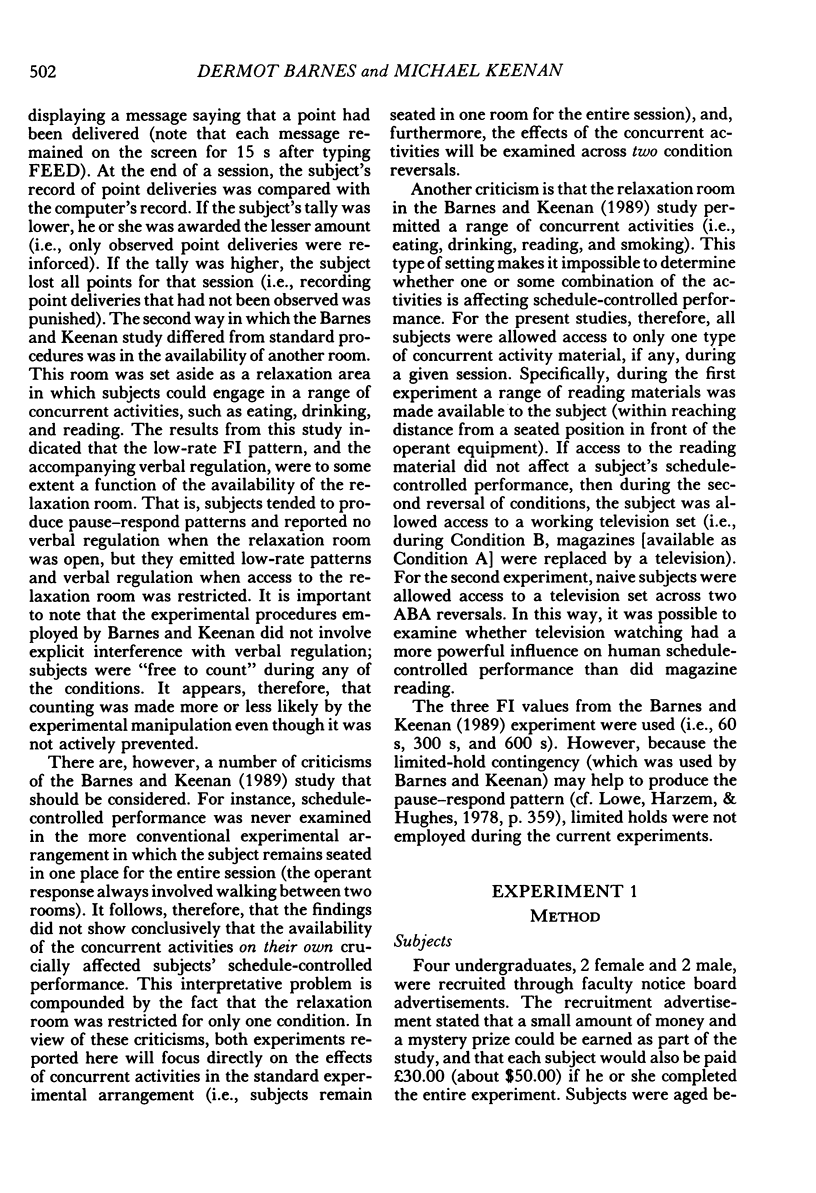
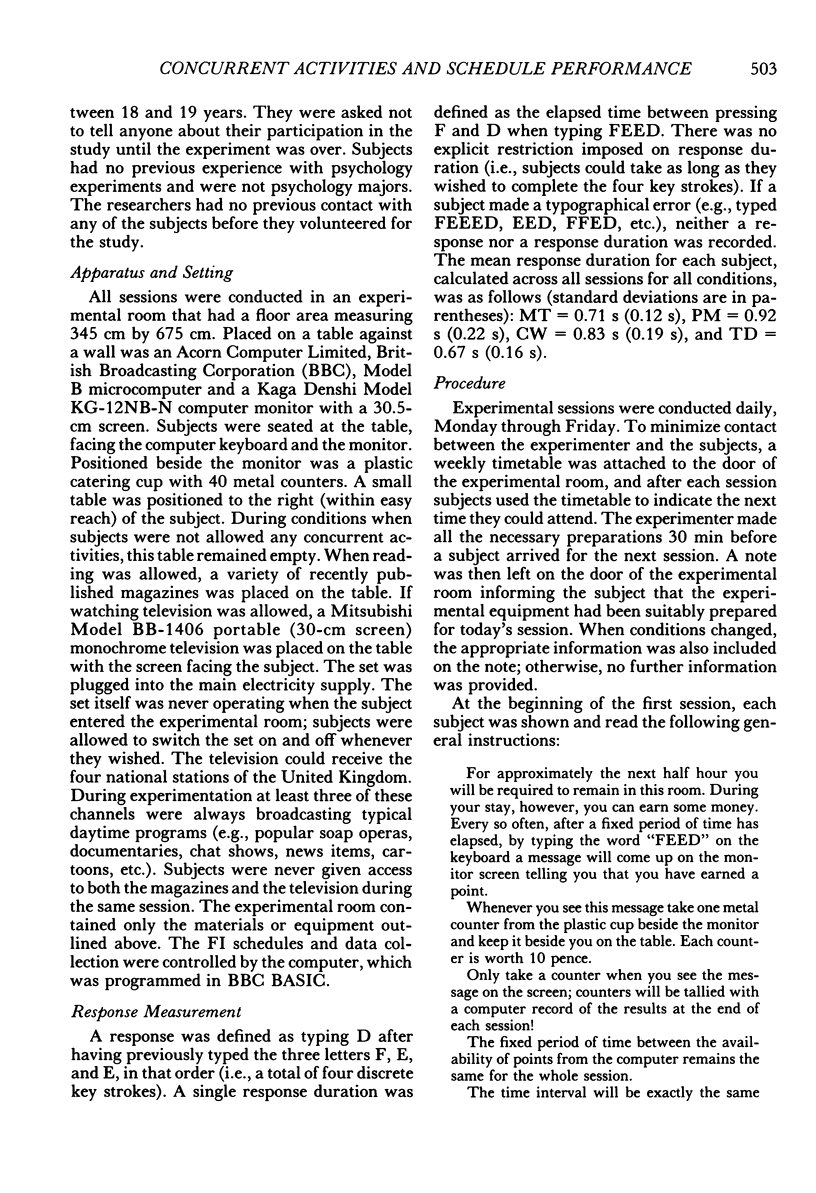
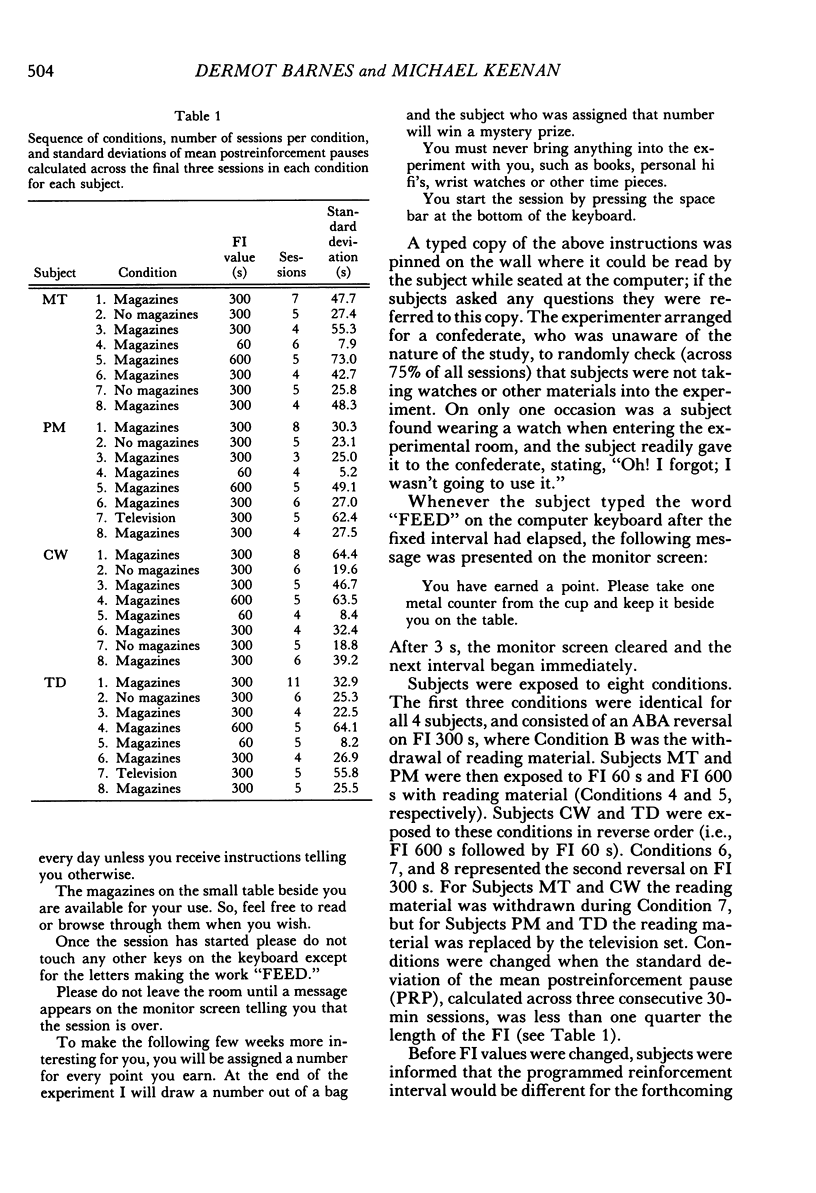
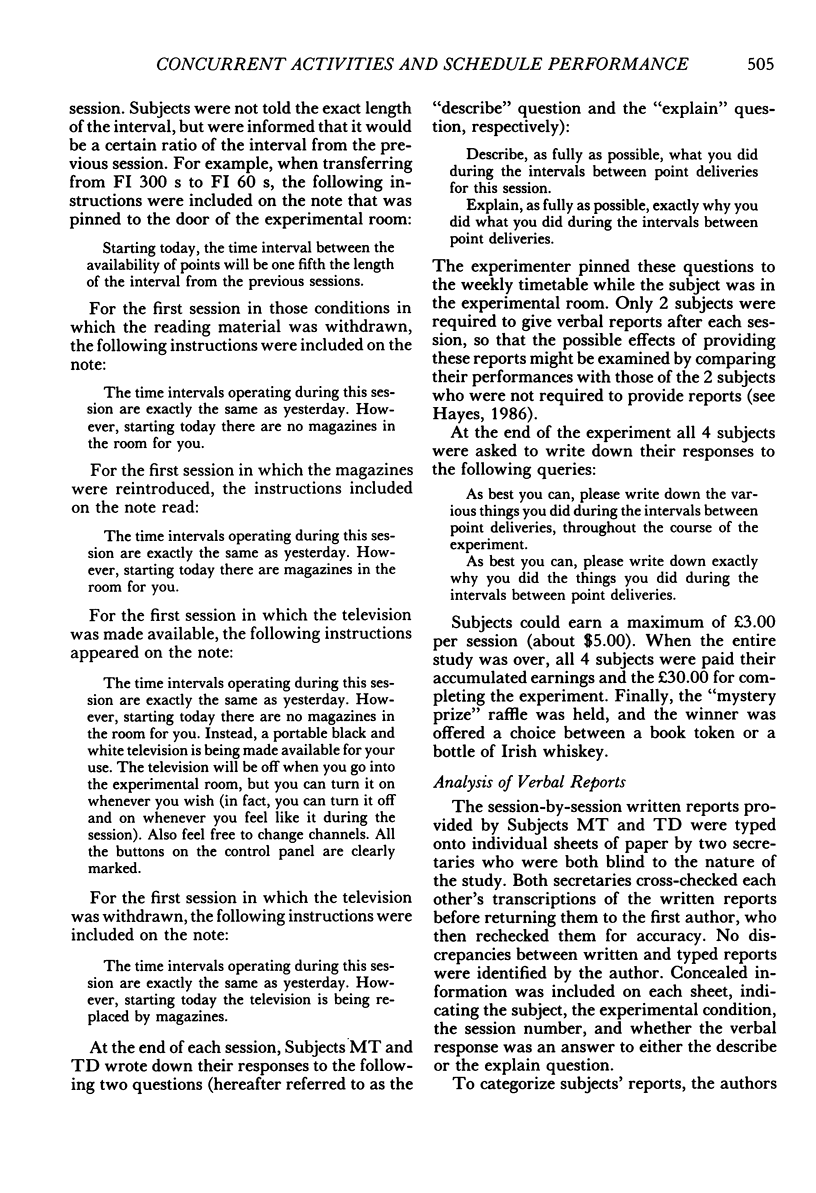
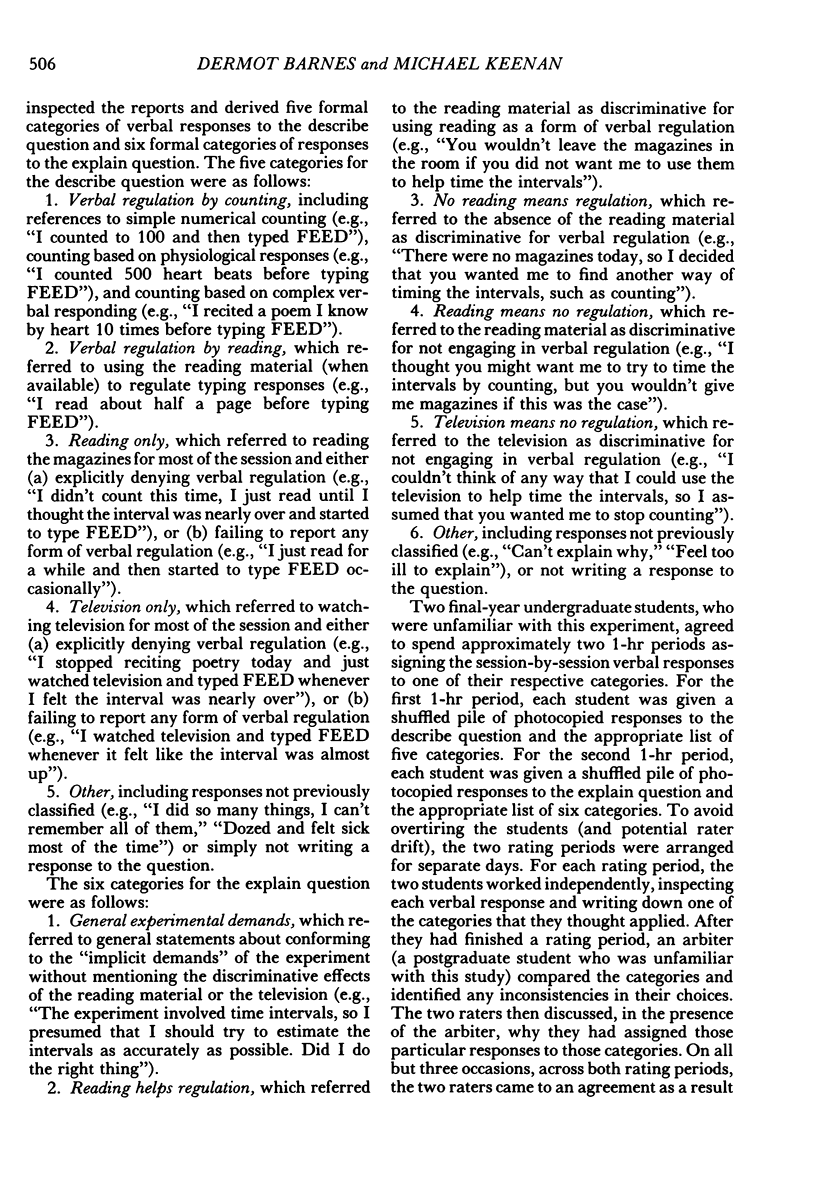
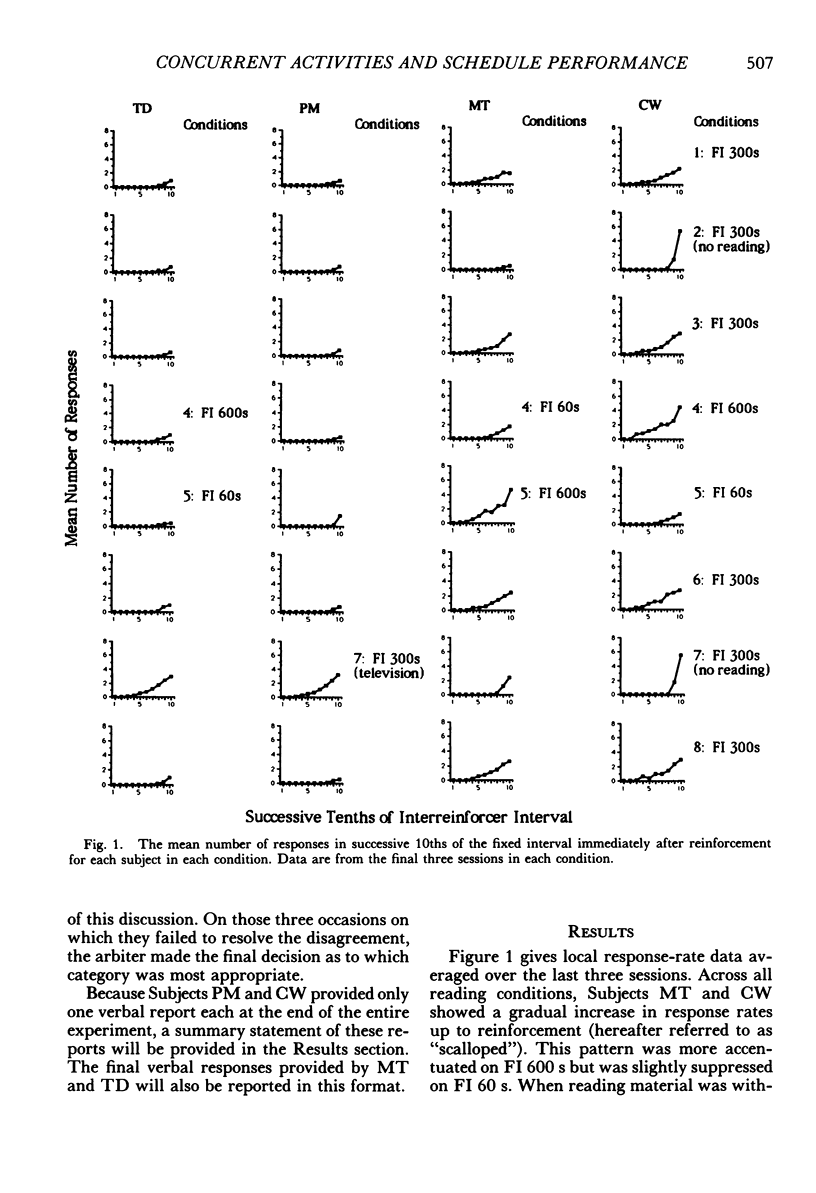
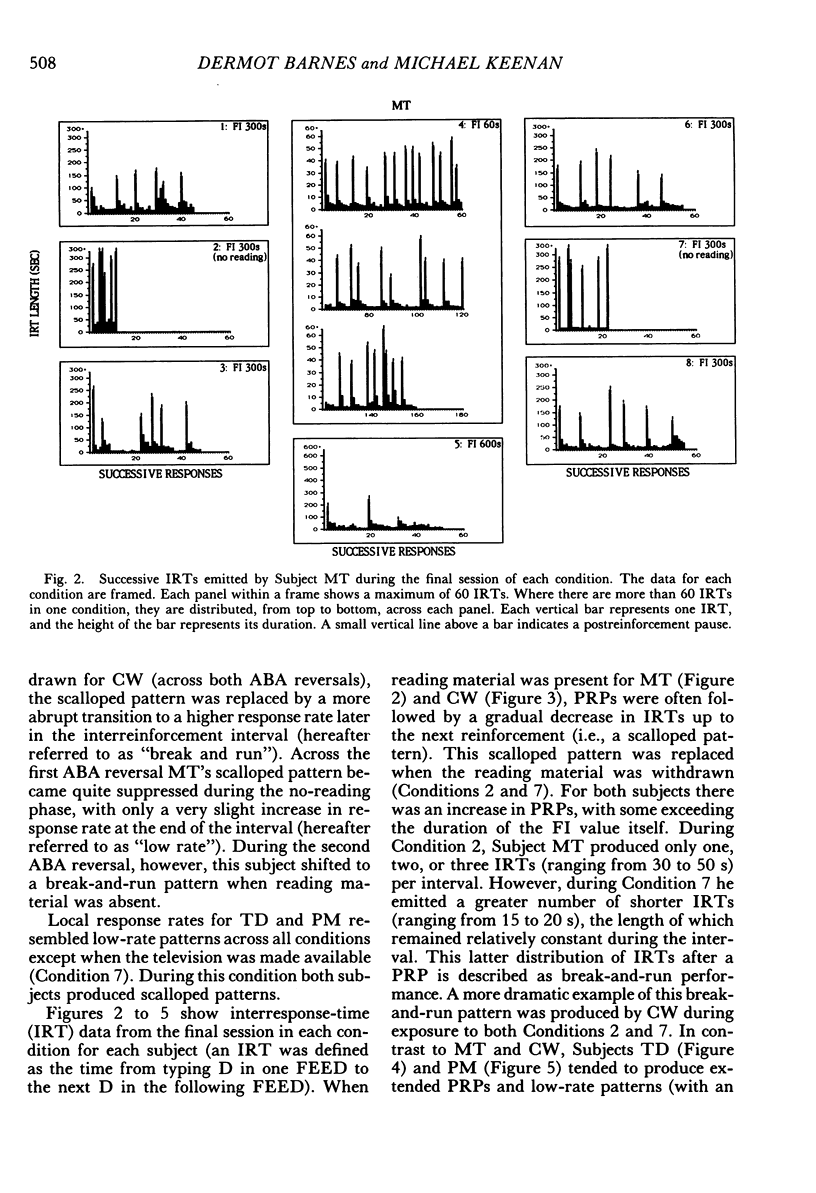

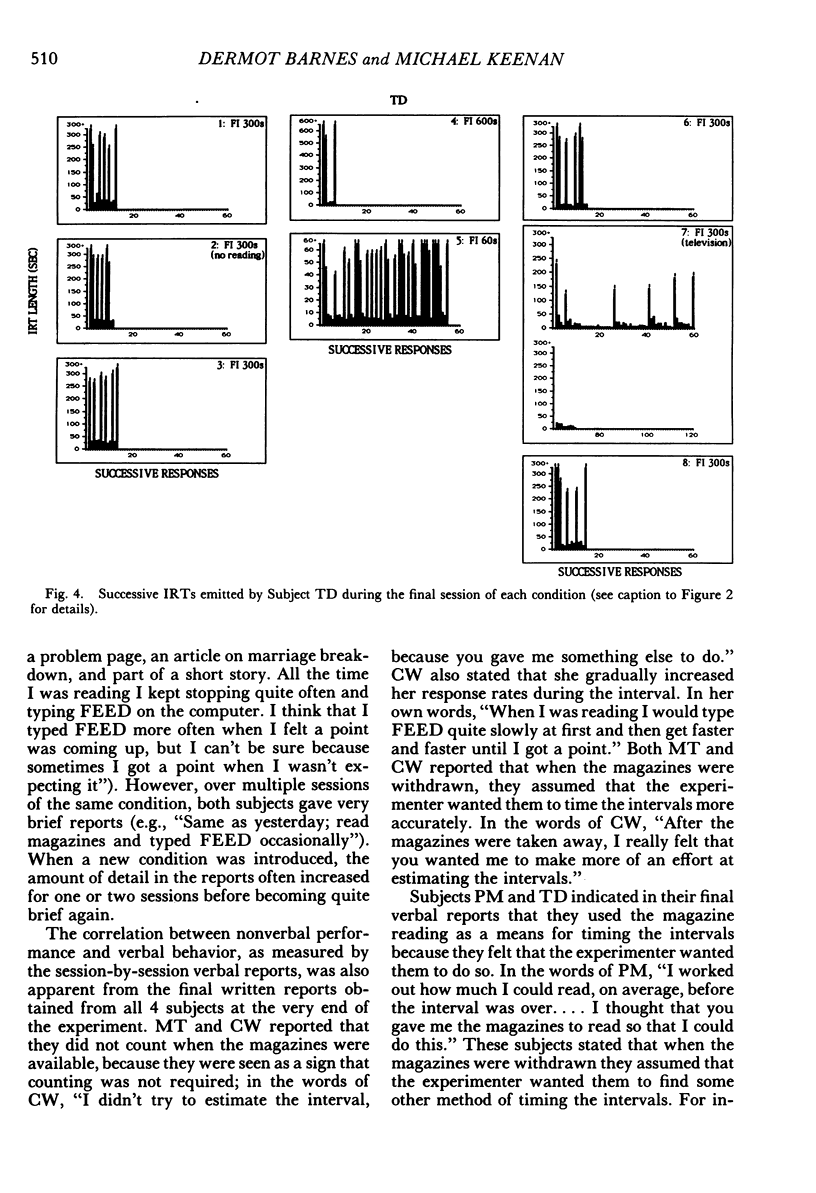
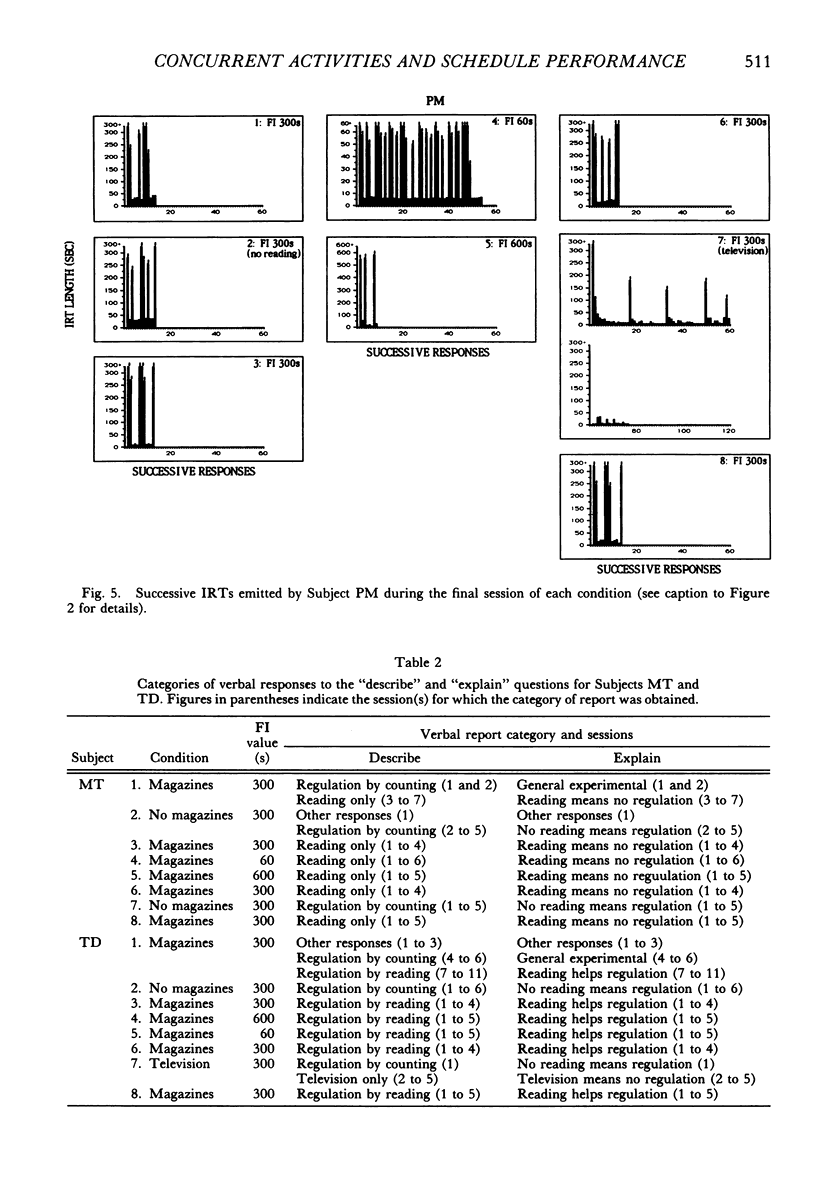

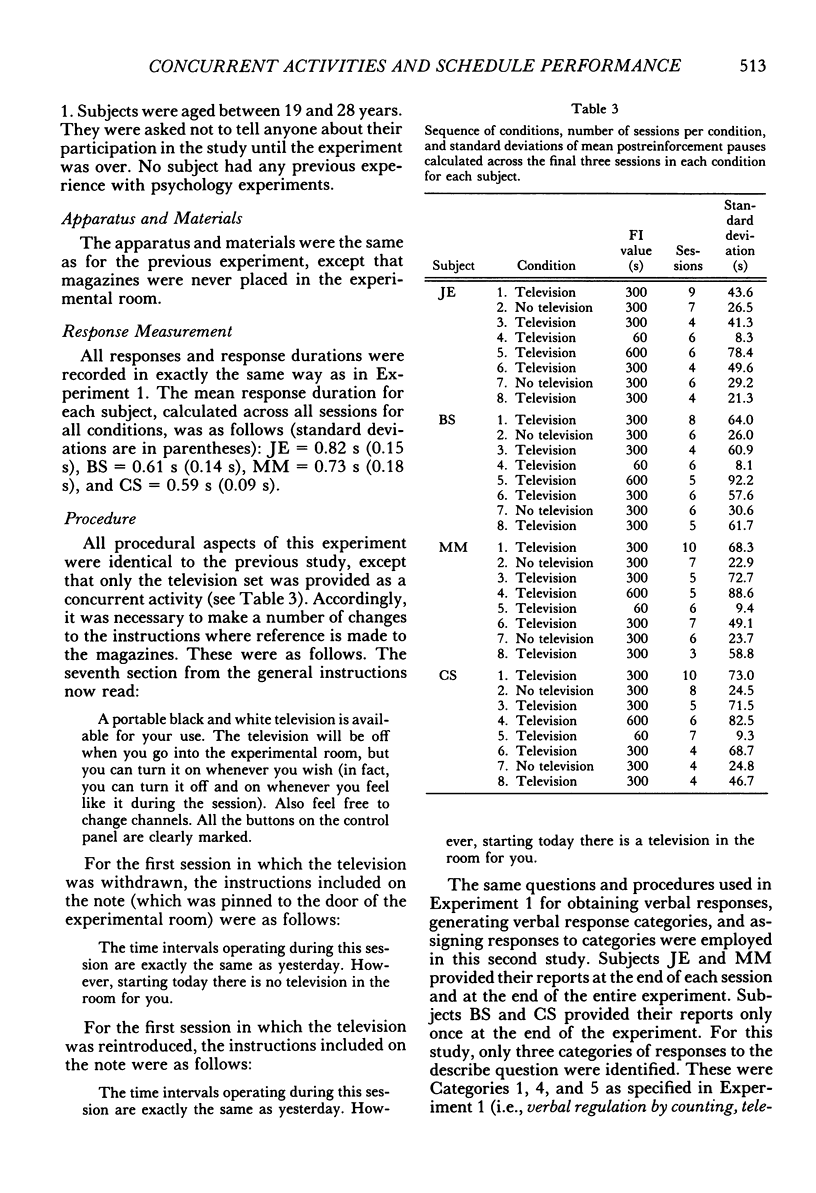
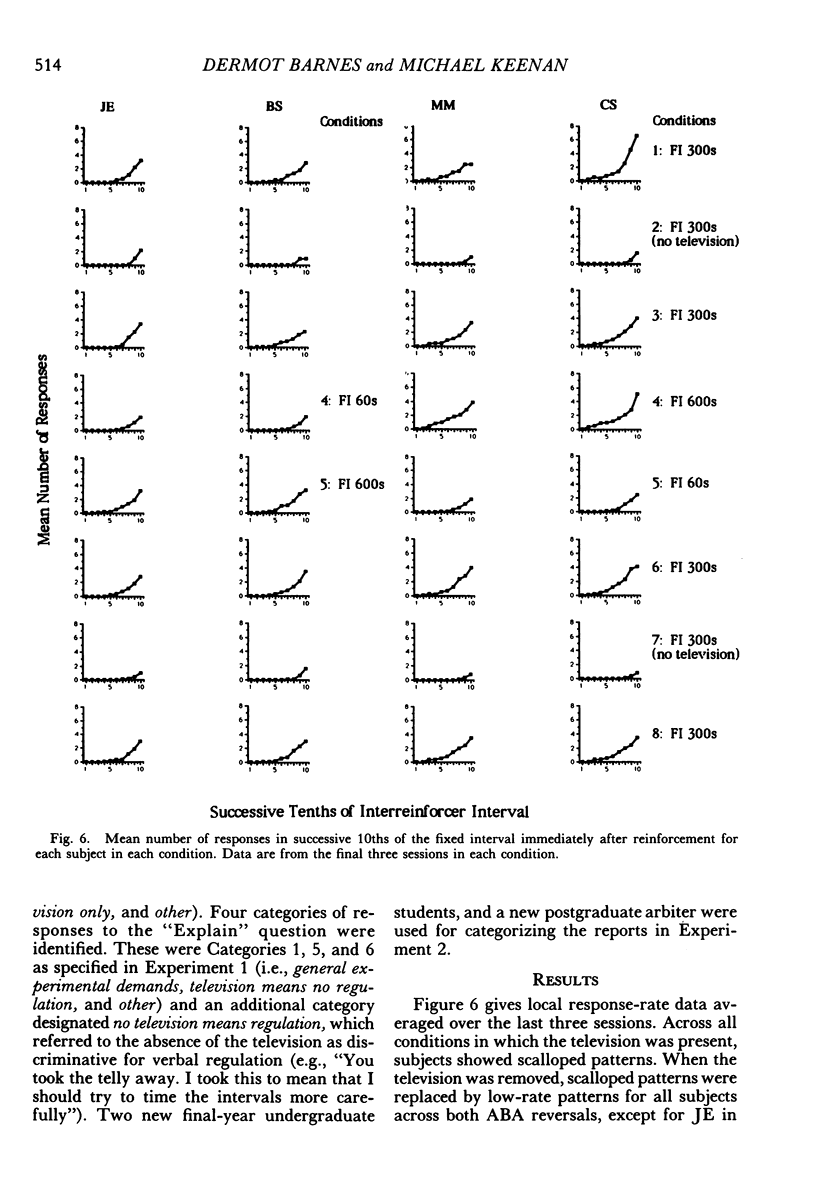
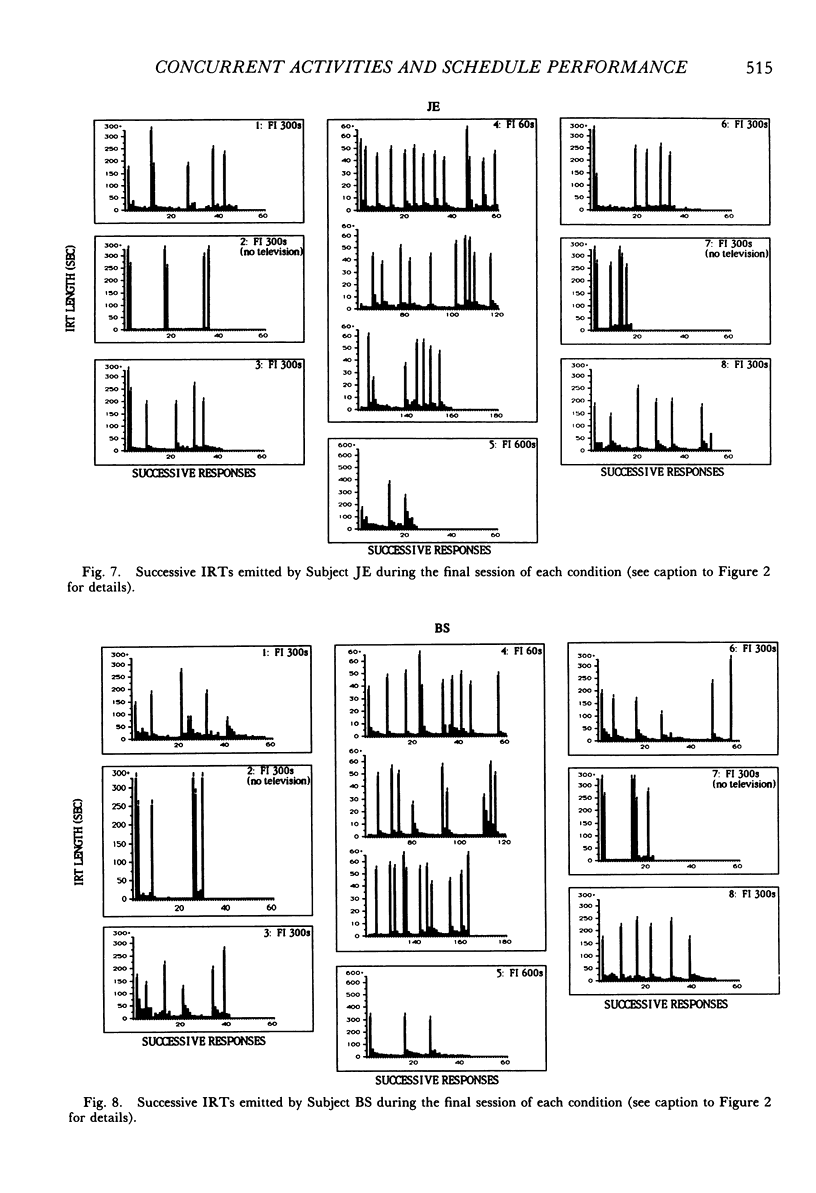
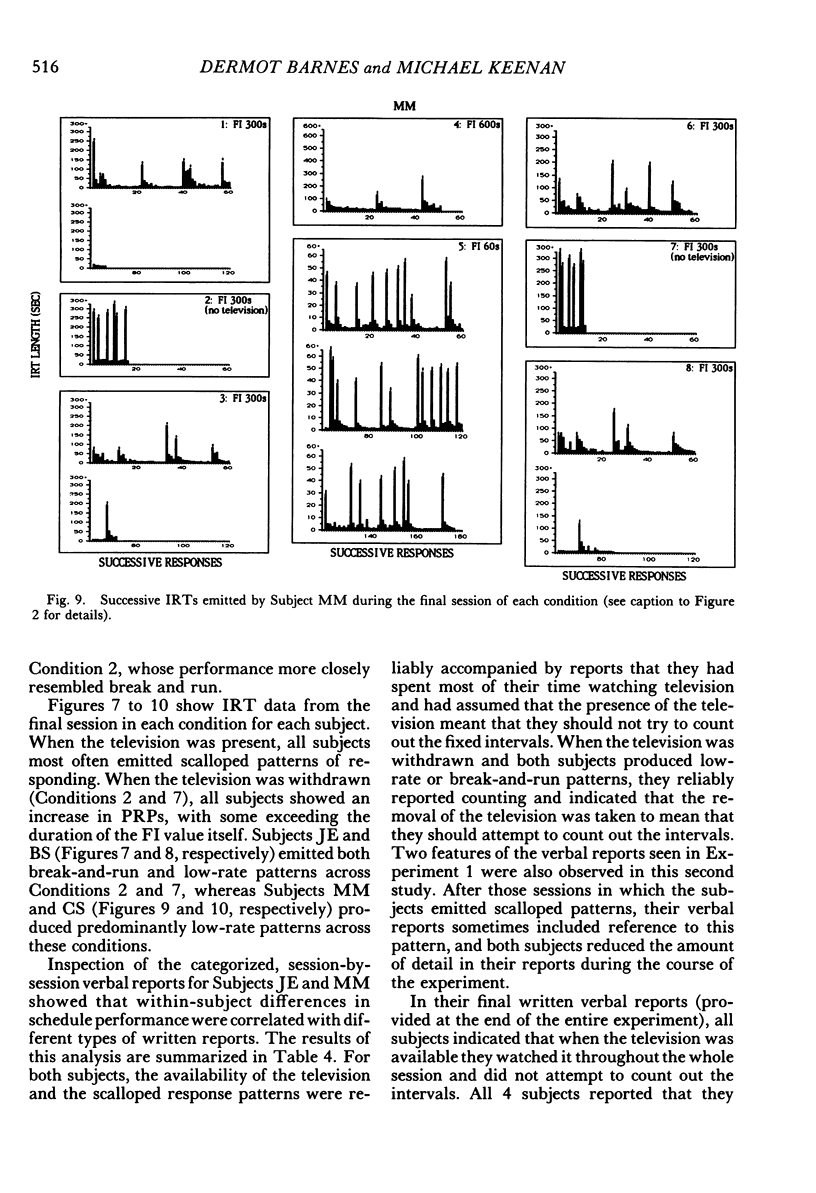
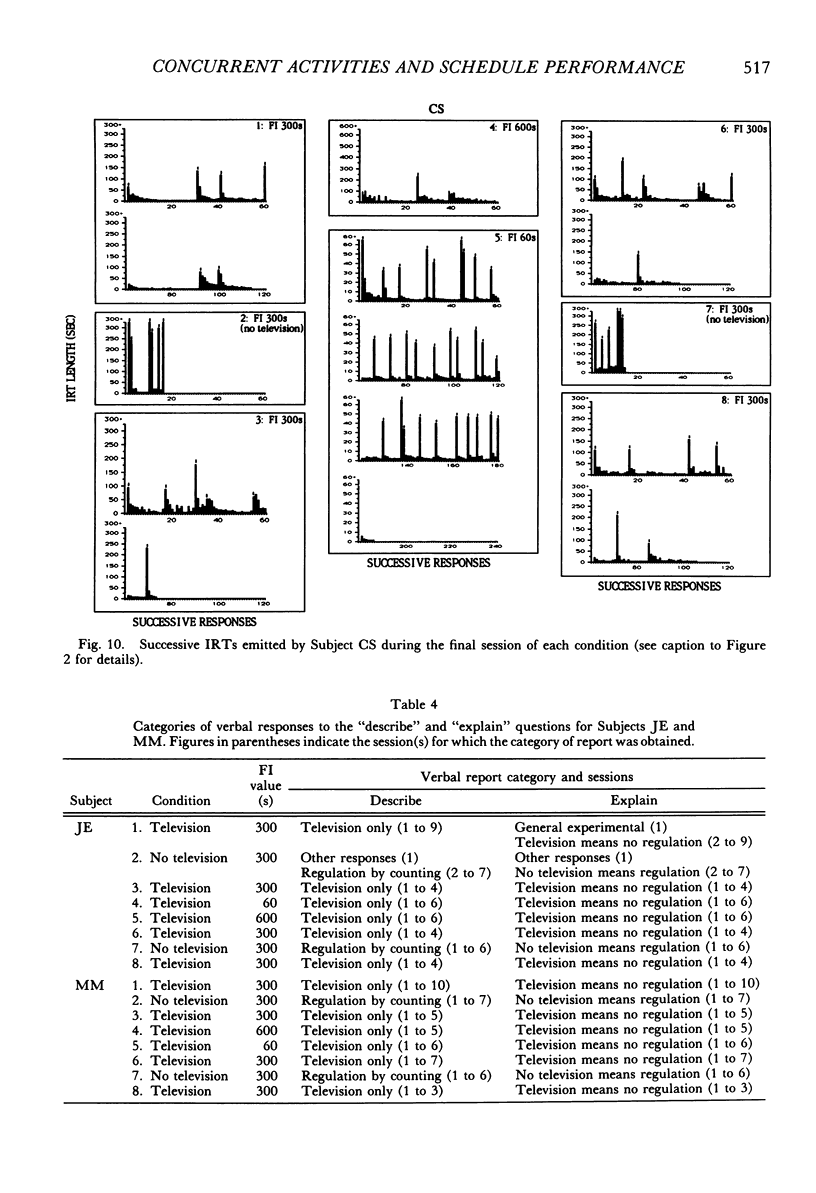
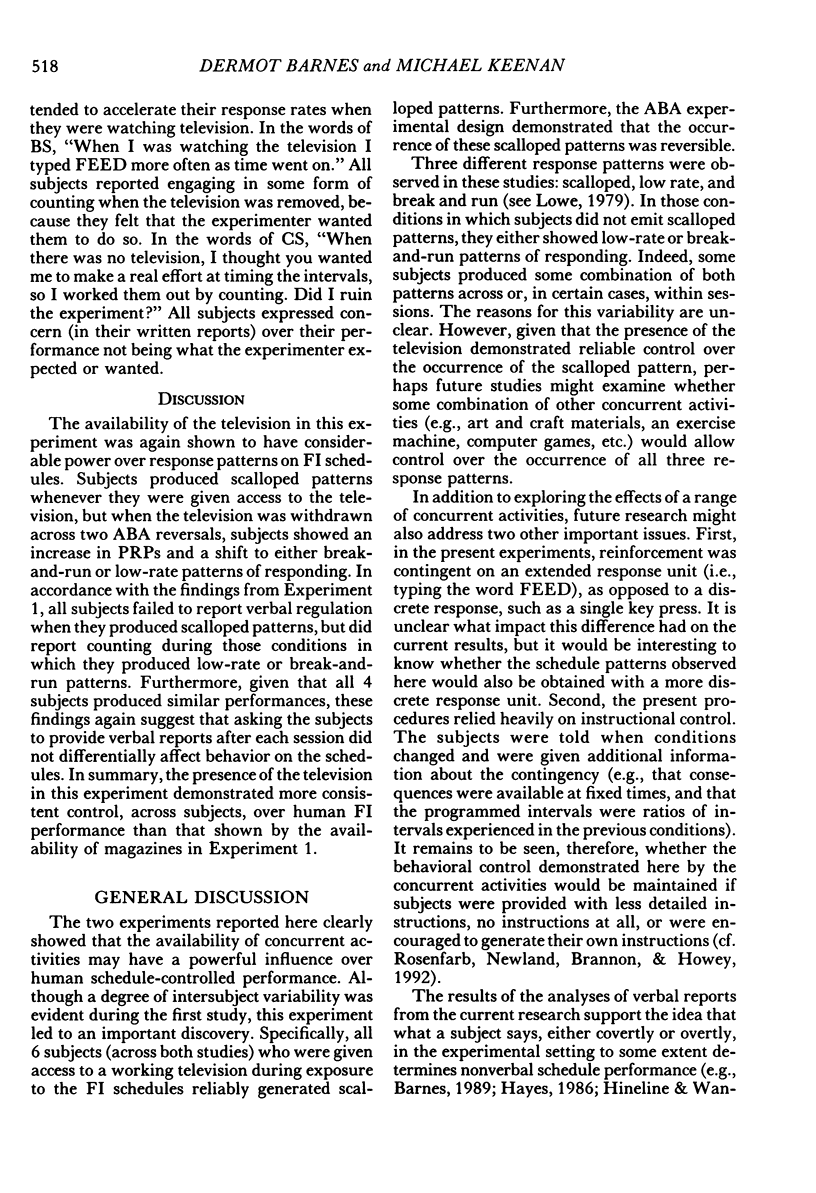

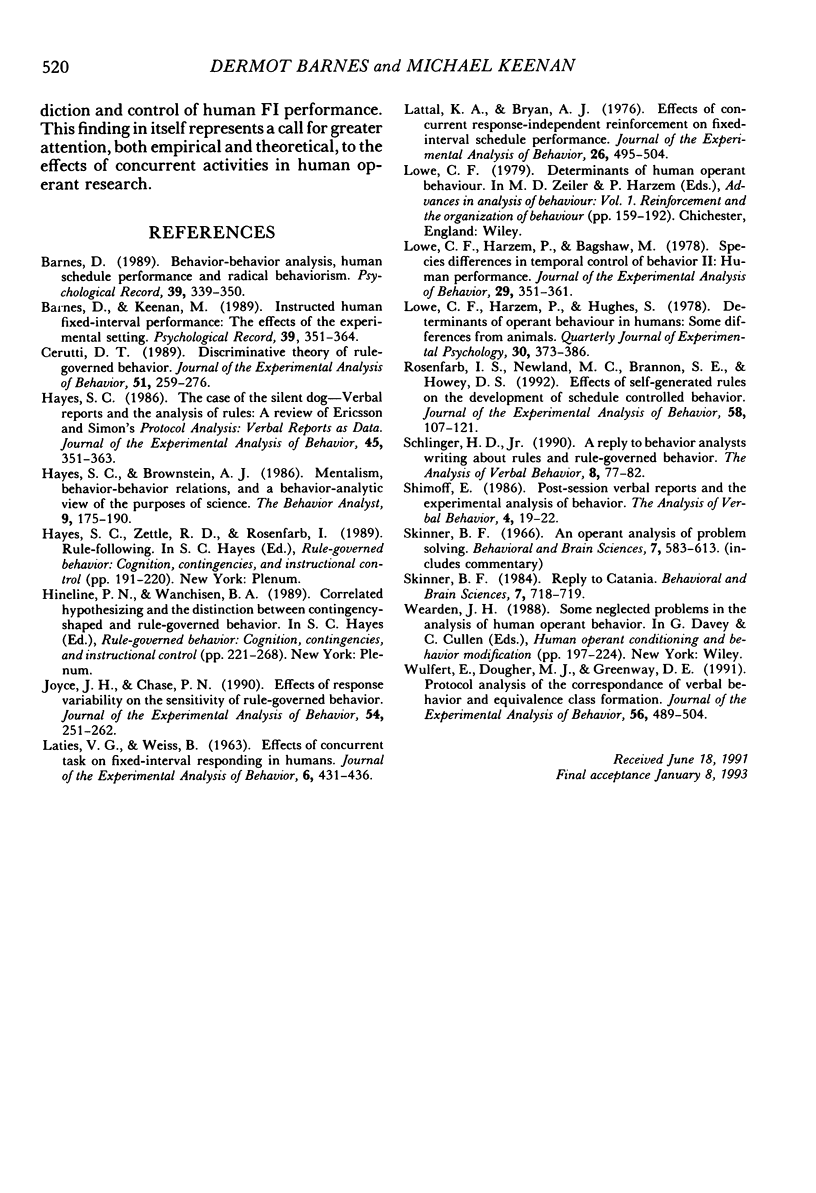
Selected References
These references are in PubMed. This may not be the complete list of references from this article.
- Cerutti D. T. Discrimination theory of rule-governed behavior. J Exp Anal Behav. 1989 Mar;51(2):259–276. doi: 10.1901/jeab.1989.51-259. [DOI] [PMC free article] [PubMed] [Google Scholar]
- Joyce J. H., Chase P. N. Effects of response variability on the sensitivity of rule-governed behavior. J Exp Anal Behav. 1990 Nov;54(3):251–262. doi: 10.1901/jeab.1990.54-251. [DOI] [PMC free article] [PubMed] [Google Scholar]
- Laties V. G., Weiss B. Effects of a concurrent task on fixed-interval responding in humans. J Exp Anal Behav. 1963 Jul;6(3):431–436. doi: 10.1901/jeab.1963.6-431. [DOI] [PMC free article] [PubMed] [Google Scholar]
- Lattal K. A., Bryan A. J. Effects of concurrent response-independent reinforcement on fixed-interval schedule performance. J Exp Anal Behav. 1976 Nov;26(3):495–504. doi: 10.1901/jeab.1976.26-495. [DOI] [PMC free article] [PubMed] [Google Scholar]
- Lowe C. F., Harzem P., Bagshaw M. Species differences in temporal control of behavior II: human performance. J Exp Anal Behav. 1978 May;29(3):351–361. doi: 10.1901/jeab.1978.29-351. [DOI] [PMC free article] [PubMed] [Google Scholar]
- Lowe C. F., Harzem P., Hughes S. Determinats of operant behavior in humans: some differences from animals. Q J Exp Psychol. 1978 May;30(2):373–386. doi: 10.1080/14640747808400684. [DOI] [PubMed] [Google Scholar]
- doi: 10.1901/jeab.1986.45-351. [DOI] [PMC free article] [Google Scholar]
- Rosenfarb I. S., Newland M. C., Brannon S. E., Howey D. S. Effects of self-generated rules on the development of schedule-controlled behavior. J Exp Anal Behav. 1992 Jul;58(1):107–121. doi: 10.1901/jeab.1992.58-107. [DOI] [PMC free article] [PubMed] [Google Scholar]
- Wulfert E., Dougher M. J., Greenway D. E. Protocol analysis of the correspondence of verbal behavior and equivalence class formation. J Exp Anal Behav. 1991 Nov;56(3):489–504. doi: 10.1901/jeab.1991.56-489. [DOI] [PMC free article] [PubMed] [Google Scholar]


